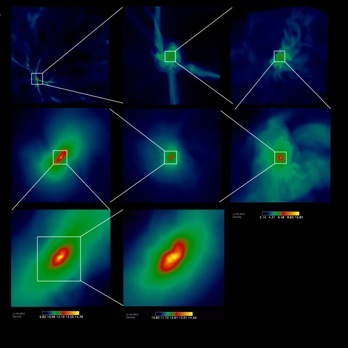 |
|
Astrophysical and Planetary Sciences Colloquium
Monday, March 29, 2010 at 4:00 PM JILA Auditorium Greg Bryan, Columbia University "Star Formation at High Redshift: What Drove the transition from Population III to Population II?"  Abstract:Theoretical and observational evidence indicates that the first generation of stars (Population III) formed from pristine gas in the high-redshift universe were typically quite massive and had short lives. However, low-mass stars with low metallicity (Population II) exist in the halo of the Milky Way, indicating that star formation quickly transitioned to a mode that allowed low-mass stars to form. This is typically explained by the enhanced radiativecooling of the gas, arising from heavy elements ejected by the first supernovae.However, the full story may be more complex, involving other players. In this talk, I will briefly review first star formation, then address the theoretical ideas behind the transition from high-mass to low-mass star formation, with an eye on observational constraints from current and future surveys of local stars. ~ ~
|